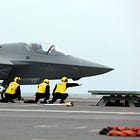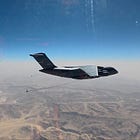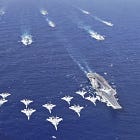China's KJ-600 AEW&C Aircraft Enters Service On CATOBAR Aircraft Carrier Fujian Without Aerial Refuelling Capability
🇨🇳
The recent commissioning of China’s first catapult-assisted take-off barrier arrested recovery (CATOBAR) aircraft carrier, the Fujian (18), constitutes a major milestone in the evolution of the People’s Liberation Army Navy Air Force (PLANAF), which exclusively operated ground-based fixed-wing crewed combat aircraft fifteen years ago and only divested of such aircraft in 2023. While the CATOBAR J-15T, J-15DT, and J-35 fighter aircraft that constitute the air wing of the Fujian and future Chinese CATOBAR aircraft carriers have received considerable attention, the single most important aircraft embarked on the Fujian is the KJ-600, which is a CATOBAR turboprop-powered, radar-equipped airborne early warning and control (AEW&C) aircraft. The KJ-600 is broadly analogous to and, for reasons rooted in physics and engineering, closely emulates the American E-2 Hawkeye family of CATOBAR AEW&C aircraft, which is also the single most important aircraft type of aircraft embarked on American aircraft carriers.
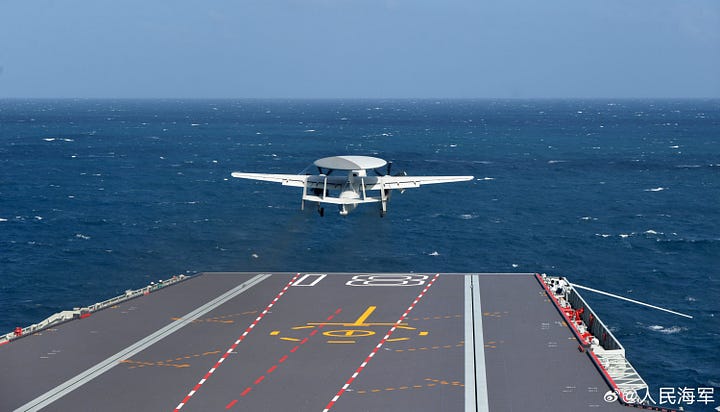
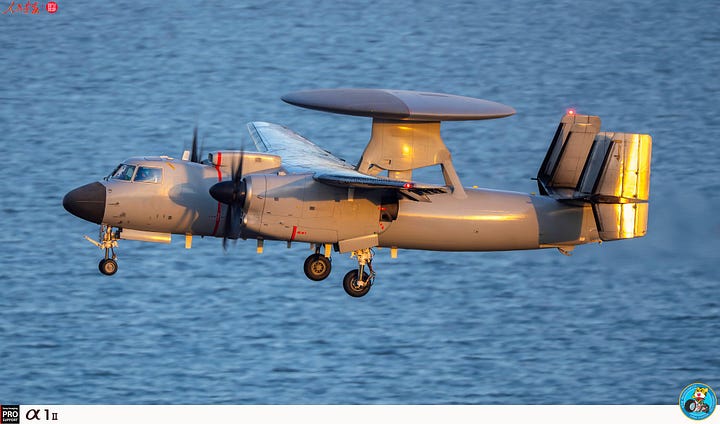

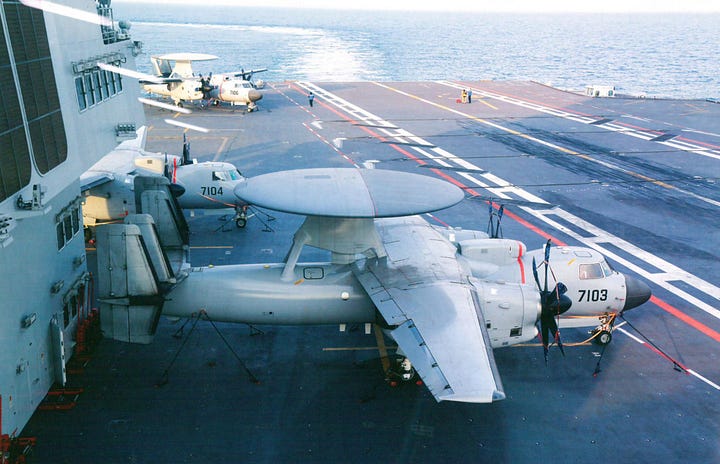
AEW&C aircraft like the E-2 and KJ-600 elevate an acquisition/search radar up to an altitude of around 25,000 feet, which results in a major expansion of radar coverage against high-flying aerial objects, low-flying aerial objects, and objects on the ocean surface. While fighter aircraft are also equipped with nose-mounted radars, those are optimized for fire control, operate in the X-band, and have a quite small antenna aperture. The E-2 and KJ-600, in contrast, are equipped with acquisition/search radars optimized for long-range detection and house a quite large radar antenna—presumably an active electronically scanned array (AESA) radar on the KJ-600, as with the latest version of its American analogue, the E-2D—in a rotating radome. There is no substitute for a carrier-borne AEW&C type aircraft, and there is a case for an aircraft carrier of some type even if it is exclusively used to launch an AEW&C type aircraft at sea. It bears mentioning that the KJ-600 and E-2 are not merely flying radar antennas; these aircraft also serve as an aerial command post and, even more importantly, an airborne radio relay. In an age of advanced radio frequency datalinks that can exchange sensor information and integrated fire control, the existence of a CATOBAR aircraft that is simultaneously a high-elevation sensor node and a high-elevation radio relay can significantly enhance naval capabilities, including the capabilities of surface warships.
Although the KJ-600 constitutes a considerable upgrade for the PLAN, all publicly known specimens, including prototypes, have a surprising and significant omission: unlike the most recently built American E-2D AEW&C aircraft, the KJ-600 does not feature a refuelling probe.
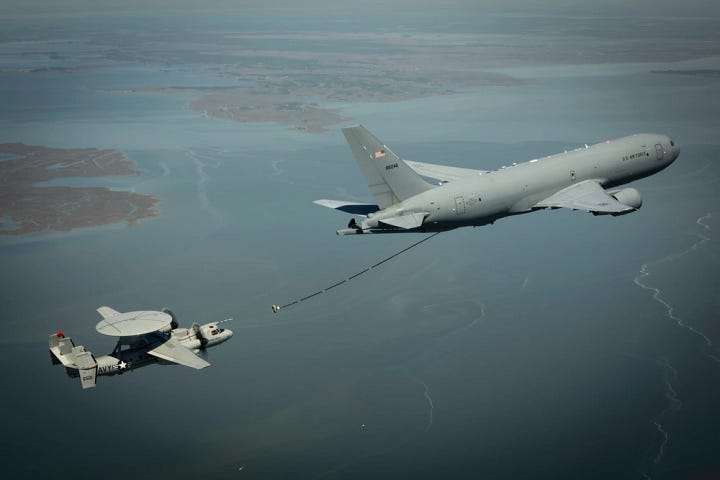
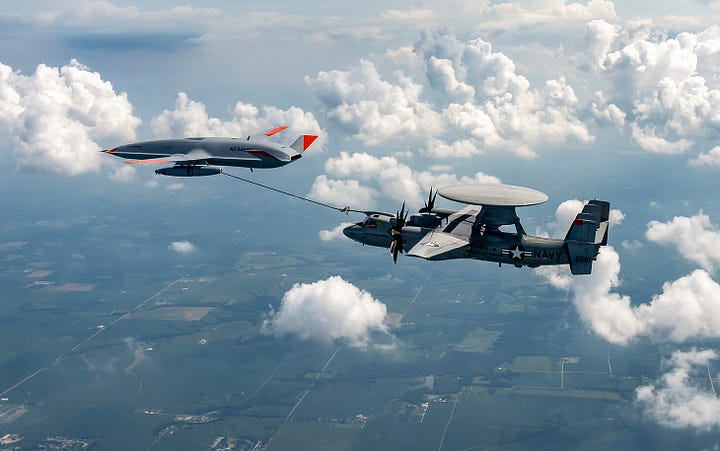
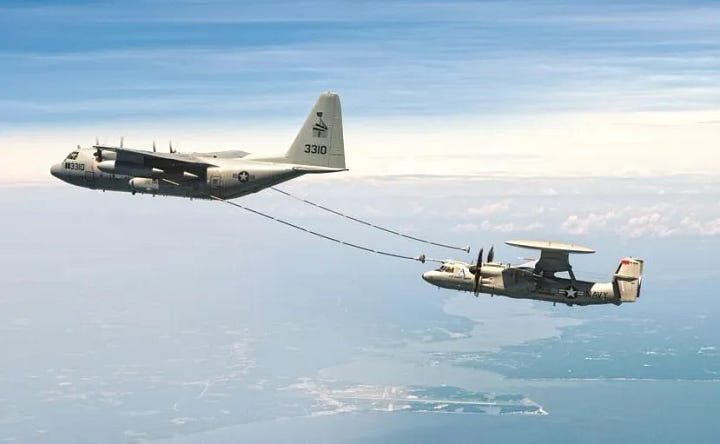
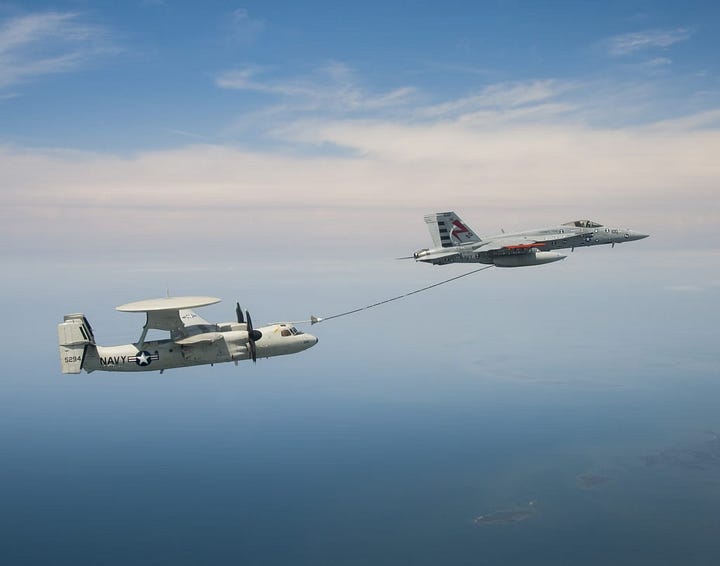
While aerial refuelling is often viewed as a means of extending the range of an aircraft, aerial refuelling is best understood as extending the range-endurance of an aircraft. That is, a KJ-600 may be orbiting around the Fujian at a radius of just 200 kilometers from its host aircraft carrier but will be able to remain airborne for several more hours if it it can be refuelled by a CATOBAR aircraft launched from the Fujian, whether crewed or uncrewed, or even a ground-based aerial refuelling aircraft that takes off from the Chinese mainland or China’s runway-equipped reefs-turned-islands in the South China Sea. As the above four images show, the American E-2, which only received an aerial refuelling probe—the E-2D is refuelled through the probe and drogue method in the same manner as all aerial refuelling-capable Chinese aircraft, can be refuelled by a diverse array of aircraft, including CATOBAR crewed F/A-18E/F fighter aircraft equipped with a “buddy” refuelling pod and uncrewed CATOBAR MQ-25 aircraft equipped with much the same that can take off from the same aircraft carrier as the E-2D. China’s J-15T fighters can also be equipped with an analogous “buddy” refuelling pod on a centerline station.
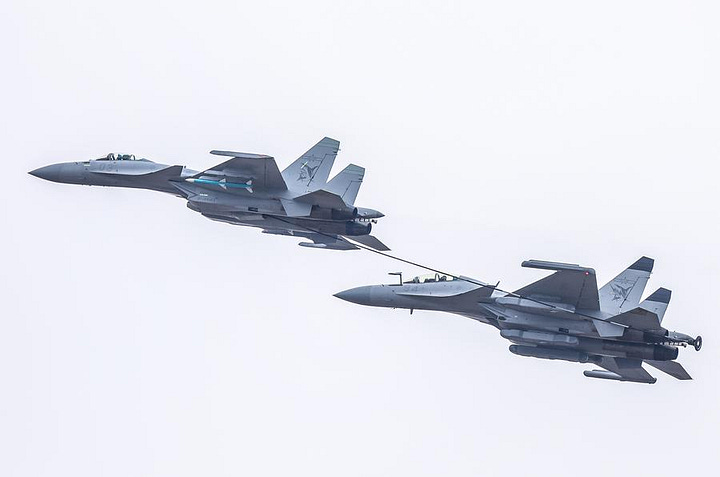
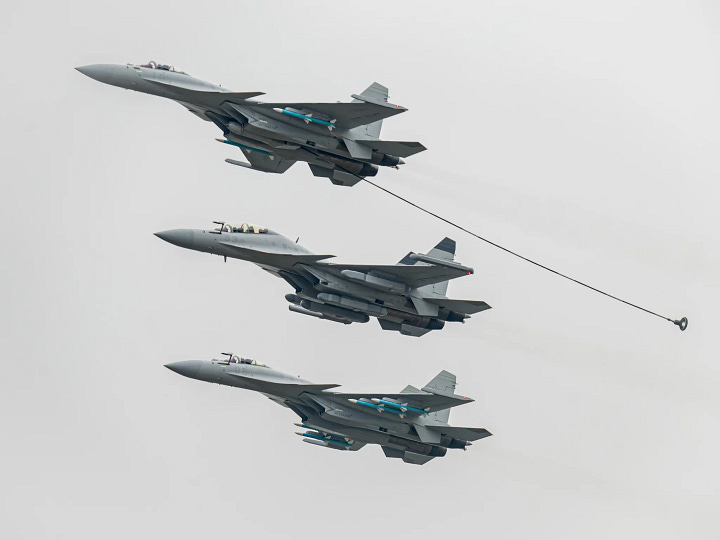
Aerial refuelling is increasingly important for air forces and navies alike, given the imperative of squeezing as much as possible from each and every aircraft sortie. While flight hours undoubtedly affect maintenance needs and are ultimately restricted more by human physiological constraints than fuel availability, provided that aerial refuelling is undertaken, sorties, which encompass take-off and landing sequences as well as the pressurization and depressurization of the cabin, are a particularly important logistical consideration as it concerns carrier-borne aircraft. This is especially the case with CATOBAR AEW&C aircraft like the E-2 and KJ-600, which occupy a very large footprint even with their folding wings.
Given the limited surface area available on the flight deck and in the hangars of an aircraft carrier, only so many aircraft of the size of the E-2 and KJ-600 can be carried without a major and very consequential decrease in the number of embarked fighter aircraft. A total of 4-6 embarked AEW&C aircraft is essentially all that can be realistically expected of even the largest aircraft carriers—the Chinese Fujian is considerably smaller than the latest American Nimitz-class and Ford-class aircraft carriers—and sustaining even a 70% serviceability rate at sea will be respectable. It bears emphasis that such a serviceability rate is not necessarily the same as having the embarked AEW&C aircraft be fully mission capable in terms of the functioning of all the electronic and mechanical systems. With the Fujian likely to have no more than two or perhaps three KJ-600 aircraft ready for flight at a given time, the ability to squeeze several more hours of endurance from an airborne KJ-600 via aerial refuelling will shape whether, for example, the Fujian and future Chinese CATOBAR aircraft carriers will be able to maintain at least one KJ-600 in flight on a constant basis in times of crisis and war, and whether Chinese CATOBAR aircraft carriers will be able to simultaneously employ a KJ-600 to watch over the carrier group while having another KJ-600 accompany a formation of CATOBAR combat aircraft on an air-to-air and/or air-to-surface mission over a radius of 500-1000 kilometers from the host Chinese aircraft carrier.
The PLAN’s CATOBAR carrier air wings are undoubtedly a work in progress, and observers operating with publicly available information are unlikely to have seen all the aircraft types that may operate on the Fujian and forthcoming Chinese CATOBAR aircraft carriers over the next decade or so. It is possible, even likely, that the KJ-600 will receive an aerial refuelling probe in the near future. Until then, the air wings of the Fujian and future Chinese CATOBAR aircraft carriers will constitute a profound expansion of Chinese military capabilities, with a curious and consequential omission as it concerns the inability of the KJ-600 to refuel while airborne.
Some related posts:


